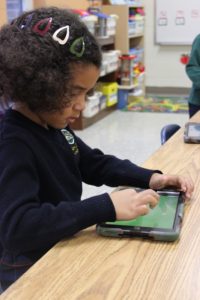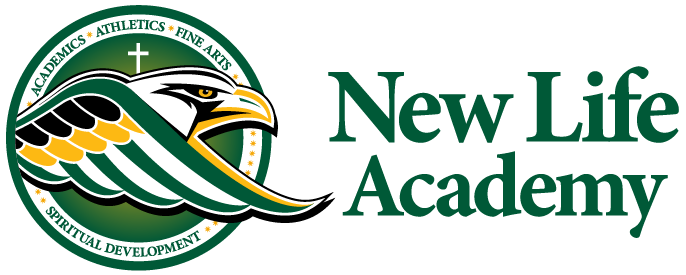Due to the generosity of New Life Academy parents at last year’s Auction, every teacher was provided with an iPad Mini and an iTunes gift card to purchase applications for learning.
In addition to Chromebooks and Macbook Air laptops, the school also owns four sets of “Classroom iPads” for use by students.
According to the Discovery Channel, the iPad may represent the future of classroom learning. Easier to use and more cost effective than a laptop, it offers a “free-flowing, dynamic” presentation, automating information for a wider spectrum of learners. It also provides support options a textbook alone does not: an intuitive touch screen, closed captioning, full-screen zoom, and language settings.
The iPad harbors seemingly limitless functionality— its most significant value. It can facilitate group collaboration in the classroom or serve as a student’s passport beyond class walls for “virtual field trips.” Teachers can use their personal iPads as a gradebook, attendance tracker, research tool, or visual aid.

Katie Ford, 7th and 8th grade English teacher, has leveraged the technology to encourage her students in reading. Using a library cataloguing application called “Book Buddy Pro,” Ford maintains her classroom library of almost 800 books.
“I tried to do a paper system in the past, but it doesn’t work as well,” she said. “Books got lost a lot.”
Ford said the app has supported her “Forty Book Challenge” reading contest. “7th and 8th graders are competing to read forty books this school year. The app teaches the students responsibility and saves time in finding books,” she said.
The classroom iPad sets have also been popular, used by many teachers for hands-on learning. Dr. Craig Butler, who teaches high school Physics, uses the classroom iPads for experiments. “Students can videotape their experiments and graph the motion from the video,” he said.
An app called “Chatterpix” has forged unique, interactive avenues of learning for Dawn Kroohn’s third grade classroom. “The app allows us to capture photos and voice record over them so it looks like the picture is speaking,” she said. “We tried it with our favorite literary character and recorded the character ‘speaking’ about the book they’re from.”
Kroohn’s class also recorded book reviews to be posted on YouTube and shared with parents. “Students are much more engaged when they know their work will be shared with others,” she said.
In addition to the iPads themselves, NLA provides ongoing education for teachers to learn about the latest applications through TIES (Technology and Informational Educational Services).
